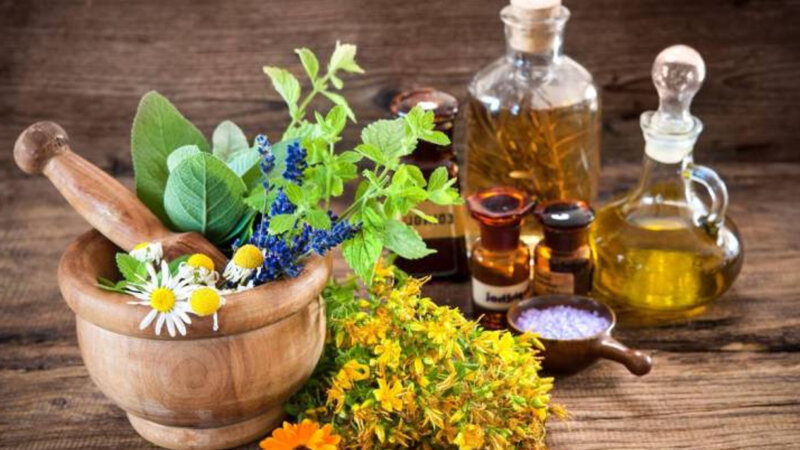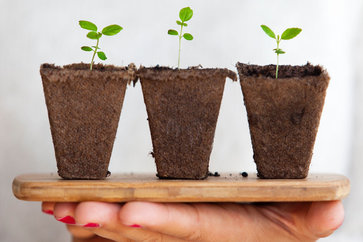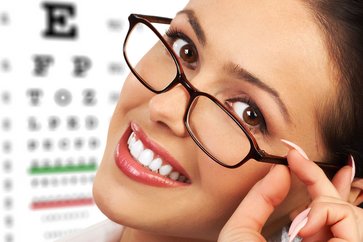What Are Essential Oils? It’s List & Beneficial Uses
What are essential oils? They are tiny drops that are concentrated in different parts of an aromatic plant: on the leaves (eucalyptus), flowers (rose), stems, roots (ginger), fruits (orange), wood (sandalwood), seeds (anise), resin ( myrrh).
Despite the name “essential oils”, they are not greasy, it is a concentrated and highly volatile substance that characterizes the plant and contains its vital principles. This substance promotes growth, reproduction and protects the plant from disease. We can say that essential oil is the soul of the plant.
The chemical composition of essential oils is complex and its benefits are exploited by aromatherapy, a technique that uses them to treat diseases of the body and psyche. In perfumery, essential oils are diluted in alcohol, wax, oil, or distilled water, as we will see later.
The essential oils are obtained through the following processes: extraction with the hands, distillation, maceration, “enfleurage” and extraction with solvents.
Ways of extracting essential oils
1.Hand extraction: this type of extraction is limited to the citrus family. The skins are pressed with the hands until the glands rupture. Today pressing machines are used and extraction is cold.
2. Distillation: it is the most common extraction process for essential oils, it was attributed to Avicenna. The extraction is carried out through the steam that the plants receive and causes the evaporation of their essential oils. This steam is conducted by a coil where it is cooled and therefore condensed. The condensed water with the essential oil separates naturally by decantation in a Florentine glass. Thus we obtain the essential oil and a scented distilled water, which is an excellent product called hydrolates.
3. Maceration: The vegetable plasters that will be used are immersed in hot vegetable oil (or purified fat) and left in a place with a hot temperature (the objective is that the temperature increases and the glands or cells expand and break). After the essential oil is absorbed it is replaced by a new layer. If fat is used, the ointment is dissolved in alcohol, if it is used in vegetable oil it can be used directly for massage.
4. Enfleurage: It is the most used way to extract essential oil. It can be cold or hot.
1. Part: similar to maceration. The vehicle is a thin layer of purified fat on which the flowers are placed until the essential oil is absorbed. The process can take several days until the fat is saturated and ointment results.
2. Part: dissolving the ointment in alcohol. The fat dissolves in it and the ointment remains liquid and warm. The alcohol evaporates and only the essential oil remains.
5. Solvent extraction: The plants are immersed in a solvent (ether, acetone, or any petroleum derivative). Chemical separation by distillation is carried out at special temperatures that condense essential oils and no solvents. Essential oils always remain with solvent residues, which makes them unsuitable.
What can oil be extracted from?
Essential oils are extracted from all parts of the plant, and each one gives us some qualities:
1. The flowers: they are elevators of the spirit, for their subtle, delicate, or intense, refined weapons. They favor integration with the subtle and the spiritual (they contain the astral body of the plant). Example: jasmine, rose, geranium, neroli.
2. The leaves: They are energetic, they tone the vital body and favor the respiratory system. Examples: mint and eucalyptus.
3. Seeds: They are energetic, they favor and strengthen the digestive system (they bring the energy back to the earth). Example: cumin.
4. Fruits: They are nutritious and energetic for the subtle body. They are fresh, they balance the emotions. Example: lemon, orange, mandarin.
5. Plant skin: balance and center. They favor the expansion of consciousness, the elevation to higher levels, without losing contact with the earth. Providing a balance between the energies of the spirit and the earth. Good for rituals, ceremonies, and liturgies. Example: sandalwood, cypress, cedar.
6. Roots: they are energetic and favor contact with the earth. They are stimulants of vital functions, such as digestion. Example: vetiver.
7. Resin: they have healing and controlling properties. They favor the glandular system, control secretions. Also used in cosmetics. Example: myrrh.
How essential oils work?
Being organic substances, they tend to act in harmony with our body creating true alchemy (transformation). We can divide the effects of essential oils into physiological and psychological.
The basic therapeutic action is to stimulate the immune system and strengthen the organs and their functions. Acting on the lymphatic, circulatory, digestive, reproductive, and urinary systems. Due to their antiseptic properties, they are used in external infections. Due to their analgesic and anti-inflammatory properties, they are used for pain in old age, such as rheumatism, osteoarthritis, and gout.
How to use essential oils
- In aromatherapy massages.
- In immersion baths – sitz baths.
- Footbath – friction and compresses.
- Vaginal bath.
SOME ESSENTIAL OILS
1. Rosemary (Rosmarinus Officinalis)
- Ayurvedic Effect: It Relieves Kapha and Vata
- Obtain from: It is extracted from flowers
- Properties: Analgesic, antidepressant, antirheumatic, antiseptic, antispasmodic, digestive, diuretic, stimulant, tonic, astringent and carminative.
- Mental/emotional: against indecision, mental fatigue, sadness, memory activator.
- Observations: do not use if the person suffers from hypertension, epilepsy, and in pregnant women.
Available in the online store as Himalaya anti-stress massage oil and as a Himalaya calming massage balmBuy Anti-stress massage oil
2. Bergamot (Citrus Bergania)
- Ayurvedic Effect: Relieves Vata.
- Obtain from: Extracted from the skin of the fruit.
- Properties: Expectorant, digestive, fights intestinal worms, antispasmodic, analgesic, refreshing.
- Mental/emotional: anxiety, confidence, and revitalization.
3. Chamomile ( Amarela-Anthemis Nobilis)
- Ayurvedic Effect: Especially soothes Pitta
- Obtain from: Extracted from flowers.
- Properties: Antispasmodic, calming, healing, comforting, sedative, diuretic and fights infections. It is good for conjunctivitis, eyestrain, irritations, styes, for pain in general (head, ears, teeth), neuralgic pain, stomach cramps, menstrual pain, gastritis, gas, and good for kidney infections. It is good for the skin in general (burns, cuts, acne, rashes). Bleaches hair.
- Mental/emotional: For very nervous, excited people who live altered and have no limits. It is good for fatigue and insomnia. Calm the mind and spirit.
- Observations: the essential oil is mild and can be used in children.
4. Cinnamon (Cinnamomum Zeylanicum )
- Ayurvedic Effect: Relieves Vata and Kapha.
- Obtain from: Extracted from the bark.
- Properties: Antiseptic, antispasmodic, aphrodisiac, hemorrhage (stains blood).
- Mental/emotional: popularly believed to attract prosperity. It is good for purifying the environment.
- Observations: It is toxic, at high doses it can cause nervous disorders. Contraindicated in pregnancy and children. Use with caution due to the possibility of contact dermatitis or allergic reactions.
5. Eucalyptus ( Eucalyptus Globules )
- Ayurvedic Effect: Relieve Kapha.
- Obtain from: Extracted from the leaf of the tree.
- Properties: Analgesic, antirheumatic, antiseptic, decongestant, insecticide.
- Mental/emotional: calms emotions, balances feelings and helps in concentration.
Available in our online store as Himalaya soothing massage Buy soothing massage balm, and as Himalaya comforting cold balm Buy comforting cold balm.
6. Rose geranium (Pelargonium Roseum)
- Ayurvedic Effect: Relieves Vata and Pitta.
- Obtain from: Extracted from the leaves and stems.
- Properties: Analgesic, astringent, hormonal balance, diuretic, insecticide, tonic, vasoconstrictor, healing.
- Mental/emotional: antidepressant, calms chronic fears, controls anxiety, balances emotions. It is good for the kidneys.
- Observations: caution with sensitive skin. Use in minimal amounts.
7. Lemon ( Citrus Limonum)
- Ayurvedic Effect: Relieves Vata.
- Obtain from: Extracted from the skin.
- Properties: Against infection, antirheumatic, antiseptic, astringent, carminative, detoxifying, diuretic, insecticidal, tonic, refreshing, and stimulates white blood cells.
- Mental/emotional: acts on the physical, mental and spiritual system. Good for out of control, lethargy.
- Observations: caution on sensitive skin and do not use friction before sunbathing.
8. Orange (Citrus Aurantium)
- Ayurvedic Effect: Relieves Vata.
- Obtain from: Extracted from the skin of the orange.
- Properties: Antiseptic, antispasmodic, carminative, detoxifier, fungicide, insecticide, sedative.
- Mental / Emotional: Excellent for all forms of anxiety and tension, fears, nightmares, insomnia, and feelings of panic.
9. Patchouli ( Pogostemom Patcholui)
- Ayurvedic Effect: Relieves Pitta and Kapha.
- Obtain from: Extracted from the leaves of the bush.
- Properties: Anti-inflammatory and antiseptic, fungicide, healing, and cell regenerator.
- Mental/emotional: anxiety.
10. Sage (Salvia Sclarea )
- Ayurvedic Effect: Relieves Kapha
- Obtain from: Extracted from flowers.
- Properties: Antiseptic, reduces blood pressure, stimulates menstruation, aphrodisiac, for kidney imbalances, leukorrhea, impotence, frigidity. Good for excess sweating and hair treatments.
- Mental/emotional: calms nerves, calming. Used for premenstrual tension, lack of sexual desire, depression, fear, spiritual exhaustion.
- Observations: Pregnant women should not use it.
11. Thyme (Thymus Vulgaris)
- Ayurvedic Effect: Relieve White Thyme to Vata and Red to Kapha.
- Obtain from: Extracted from the branches and flowers.
- Properties: Antiseptic, antibiotic, and analgesic.
- Mental/emotional: depression, neurasthenia.
- Observations: use in minimal amounts on sensitive skin.
12. Vetiver (Vetiveria Zizanioides)
- Ayurvedic Effect: Relieves Pitta
- Obtain from: Extracted from the roots.
- Properties: Refreshing and moisturizing oil. Good for bathing lubricates the joints (arthritis, osteoarthritis, muscle pain), increases circulation and the body’s immunity. It is good for tired and aged skin.
- Mental/emotional: nervousness, fatigue, fear, hysteria. With its woody aroma (similar to sandalwood), it inspires and uplifts.
13. Ylang Ylang (Camanga Odorata)
- Ayurvedic Effect: Relieves Vata and Pitta.
- Obtain from: Extracted from flowers.
- Properties: Antiseptic, lowers blood pressure, prevents fever. Aphrodisiac. For skin ailments.
- Mental/emotional: calming, antidepressant, sedative. Stimulates relaxation, sexuality, satisfaction, and love.


























